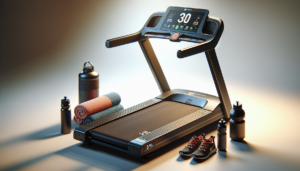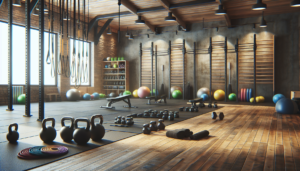Understanding the Basics: What Are Abs?
The term “abs” is short for abdominal muscles, specifically the rectus abdominis muscle that runs vertically on the front of the abdomen. When well-defined, this muscle creates the appearance of a “six-pack.” Achieving visible abs is a common fitness goal for many people.
The Anatomy of Abs
The rectus abdominis is the most superficial of the abdominal muscles. It originates at the pubic bone and inserts at the sternum and lower ribs. This muscle is responsible for flexing the spine, as in a crunch exercise. Beneath the rectus abdominis lie other important core muscles including the internal and external obliques and the transverse abdominis.
Why Are Abs Important?
Beyond the aesthetic appeal of a six-pack, strong abdominal muscles are crucial for core strength and stability. The core muscles work together to support the spine, maintain posture, and transfer power between the upper and lower body. A strong core can improve athletic performance, reduce the risk of injury, and alleviate lower back pain. Visible abs are often seen as a symbol of peak fitness and dedication to a healthy lifestyle.
Factors Influencing the Time to Get Abs
The time it takes to achieve visible abs varies from person to person. It depends on several key factors, including body fat percentage, diet, and exercise regimen. Understanding these factors can help set realistic expectations and create an effective plan for getting abs.
Body Fat Percentage: The Key to Visible Abs
Visible abs require a low body fat percentage. For men, abs typically start to show at around 10% body fat, while women generally need to be below 20% body fat. However, the exact percentage varies based on individual body composition and muscle mass.
Body fat is categorized as either subcutaneous fat (the soft fat just under the skin) or visceral fat (the deeper fat surrounding the organs). Subcutaneous fat, particularly in the abdominal area, must be reduced to reveal the underlying muscle definition.
The Role of Caloric Deficit
Creating a caloric deficit is essential for fat reduction and weight loss. This means consuming fewer calories than the body burns on a daily basis. A safe and sustainable deficit is about 500 calories per day, which can lead to a loss of one pound of fat per week.
It’s important to note that spot reduction is not possible. Doing crunches or other ab exercises will not specifically burn belly fat. Instead, overall fat loss through a caloric deficit is necessary to reveal the abs.
Importance of Exercise Regimen
While a caloric deficit is key for fat loss, exercise plays a crucial role in building and maintaining muscle mass. A well-rounded exercise regimen should include a combination of cardio for calorie burning and strength training for muscle development.
Strength training is particularly important for preventing muscle loss during a caloric deficit. Maintaining lean muscle mass keeps the metabolism high and gives the body a toned, defined look as body fat decreases.
Effective Workouts for Achieving Abs
To maximize results, focus on workouts that burn overall body fat while strengthening the core muscles. A combination of high-intensity interval training, resistance training, and targeted exercises can be highly effective for achieving visible abs.
High-Intensity Interval Training (HIIT)
HIIT involves short bursts of intense exercise alternated with periods of rest or lower-intensity exercise. This type of training elevates the heart rate and metabolism, leading to increased fat loss both during and after the workout. HIIT can be performed with cardio exercises like sprinting, cycling, or jumping rope, or with bodyweight or resistance exercises.
Strength and Resistance Training
Resistance training, using bodyweight, free weights, or machines, is essential for muscle building. Compound exercises that work multiple muscle groups, such as squats, deadlifts, and push-ups, are particularly effective for strengthening the core while building overall muscle mass. Aim for at least two to three strength training sessions per week.
Targeted Abdominal Exercises
While spot reduction is not possible, targeted exercises can strengthen and tone the abdominal muscles. Some effective exercises include:
- Crunches: Lie on your back with knees bent and feet flat on the floor. Place your hands behind your head and lift your shoulders off the ground, contracting the abs.
- Planks: Start in a push-up position with forearms on the ground. Keep your body in a straight line from head to heels, engaging the core muscles.
- Reverse Crunches: Lie on your back with knees bent and feet flat. Lift your hips off the ground, bringing your knees towards your chest.
- Bicycle Crunches: Lie on your back with hands behind your head. Bring your knees towards your chest and alternate extending each leg while twisting your upper body to bring the opposite elbow towards the knee.
Aim to include ab-specific exercises two to three times per week, either as part of a full-body workout or on their own.
Diet Modifications for Abs
In addition to creating a caloric deficit, making strategic diet modifications can support fat loss and muscle development. Focus on healthy eating habits that provide the nutrients needed to fuel workouts and recover effectively.
Importance of Protein Intake
Adequate protein intake is crucial for maintaining muscle mass during a caloric deficit. Protein also helps with satiety, keeping you feeling full and satisfied on fewer calories. Aim for about 0.7 to 1 gram of protein per pound of body weight, spread throughout the day. Good protein sources include lean meats, fish, eggs, dairy, legumes, and protein powders.
Avoiding White Carbs and Choosing Brown Carbs
Refined or “white” carbs like white bread, pasta, and sugary snacks cause rapid spikes in blood sugar and insulin, which can lead to fat storage. Instead, opt for “brown” or whole grain carbs like brown rice, quinoa, oats, and whole wheat bread. These provide more nutrients, fiber, and sustained energy.
Healthy Snacks and Hydration
When trying to get abs, it’s important to make smart snacking choices. Opt for healthy snacks that are high in protein, fiber, and nutrients, such as Greek yogurt, nuts, seeds, fruits, and vegetables. These help keep you satisfied and energized between meals.
Staying hydrated is also key for metabolism and overall health. Aim for at least 8 glasses of water per day, and more if you’re exercising heavily or in a hot climate. Water can also help suppress appetite and reduce cravings.
Timeline: How Long Does It Take to Get Abs?
The timeline for getting visible abs varies from person to person. It depends on factors like starting body fat percentage, exercise consistency, and adherence to a caloric deficit.
Factors Affecting the Timeline
The biggest factor in the timeline is starting body fat percentage. Those who begin with a higher body fat percentage will need to spend more time in a caloric deficit to reduce fat and reveal abdominal definition. On the other hand, those who start with a lower body fat percentage may see results more quickly.
Exercise consistency and adherence to a healthy diet also play a major role. Consistently creating a caloric deficit and following a rigorous workout plan will yield faster results than an inconsistent or half-hearted approach.
Average Timeframes for Men and Women
On average, it takes about 15 to 21 months for men to achieve visible abs, assuming a starting body fat percentage of 20-25% and a consistent approach to diet and exercise.
For women, who naturally have a higher body fat percentage, it may take 20 to 26 months, assuming a starting body fat percentage of 25-30%.
However, it’s important to note that these are rough estimates. Some may achieve results faster, while others may take longer. Genetics, age, hormone levels, and other individual factors all play a role.
Maintaining Your Abs: Long-Term Strategies
Getting abs is one thing; keeping them is another. To maintain visible abs over the long term, it’s essential to make sustainable lifestyle changes and stay dedicated to healthy habits.
Consistency in Workouts
Maintain a consistent workout routine that includes a mix of strength training, cardio, and ab-specific exercises. Aim for at least three to four workouts per week, and don’t be afraid to switch things up to keep your body challenged. Remember, exercise consistency is key to long-term results.
Sustaining a Healthy Diet
Nutrition is just as important as exercise for maintaining abs. Stick to a healthy diet that emphasizes whole foods, lean proteins, complex carbs, and healthy fats. Allow yourself the occasional treat, but make sure the majority of your diet supports your fitness goals. Stay hydrated by drinking plenty of water throughout the day.
Staying Motivated and Patient
The journey to getting and maintaining abs requires patience and discipline in diet and exercise. Results won’t happen overnight, and there may be setbacks along the way. Find ways to stay motivated, whether it’s working out with a friend, setting new fitness goals, or celebrating your progress.
Remember, visible abs are a reflection of overall health and fitness. Focus on how you feel, not just how you look. With hard work, consistency, and a positive attitude, you can achieve and maintain your ab goals over the long term.
In conclusion, getting six-pack abs is a challenging but achievable goal. It requires a dedicated approach to diet and exercise, with a focus on creating a caloric deficit, strength training, and targeted ab work. The timeline varies, but with consistency and patience, most people can achieve visible abs within 15 to 26 months. Maintaining abs over the long-term requires a sustainable, healthy lifestyle and an ongoing commitment to fitness.






